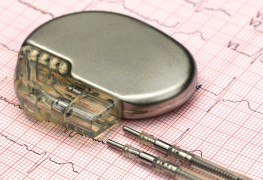This common heart rhythm disorder affects nearly 200,000 Canadians. Today, thanks to highly effective treatments, most people with A-Fib are able to get their heart beating regularly and drastically reduce the risk of developing serious complications. Read on to learn more.
- Browse Categories
- All Tips
-
Home & Garden
- All
- Appliances
- Bathroom
- Cleaning
- Crafts
- Decorating
- Electrical
- Flooring
- Furniture
- Garage Door
- Gardening
- Green Living
- Heating
- Home Alarm Systems
- Home Maintenance
- Home Remedies
- Home Security
- Home Staging
- House Sitting
- Junk Removal
- Kitchen
- Lawn Care
- Lock Systems
- Moving
- Outdoor Living
- Pest Control
- Plumbing
- Renovation
- Roofing
- Snow Removal
- Storage
- Tools
- Tree Service
- Health
- Family
- Travel
- Auto
- More Tips

Understanding Atrial Fibrillation
November 4, 2015

1. What is happening
When your heart’s natural electrical conduction system is disrupted for any reason, you may experience an irregular heartbeat, or cardiac arrhythmia. One of the most common of these is atrial fibrillation, also known as A-Fib or AF.
This problem occurs in the atria, the two upper chambers of the heart. When your heart is functioning properly, the atria empty blood into the lower chambers by a forceful pumping contraction, which is triggered by a single electrical impulse. If the impulses are too small and weak, the result is a series of rapid, uneven contractions, which aren't strong enough to pump the blood forward. This unstable situation, called atrial fibrillation, can be constant or can occur in episodes that alternate with normal heart rhythm.
Although A-Fib is not particularly dangerous in itself, it can cause unpleasant symptoms and lead to potentially serious complications. During an AF episode, the contractions of your atria are so rapid and chaotic that the atrial walls simply quiver (fibrillate), rather than pump.
As a consequence, your heart’s upper chambers are only partially emptied of blood, preventing the lower ventricles from filling properly. Your heart then cannot keep up with your body’s demand for blood. You may feel weak, dizzy or short of breath. You may also experience heart palpitations or chest pains.
The real danger from atrial fibrillation is that the stagnant blood left in the partially emptied atria can form a clot. If it breaks loose and enters your bloodstream, this clot could travel upwards to your brain, causing a stroke. However, when you take a blood thinner to prevent clots from forming in the atria.
2. First steps
- Proper evaluation of your symptoms by a cardiologist to get your treatment regimen off on the right foot.
- Anticoagulant drug therapy to prevent stroke.
- Medications to restore normal heart rate and rhythm.
- For some, a brief electric shock to jolt the heart back into its normal rhythm (called cardioversion).
3. Taking control of A-Fib
- Avoid caffeine and alcohol. Both can trigger an episode of AF in otherwise healthy people. Do not exceed two drinks a day — if you drink at all.
- Quit smoking. Nicotine can trigger abnormal heart rhythms.
- Discuss anticoagulants. Especially if you are an older woman with A-Fib, ask your doctor if taking an anticoagulant would be good for you. According to a study in the journal Circulation, women age 75 and older with newly diagnosed AF were half as likely as their male counterparts to receive a prescription for the anticoagulant warfarin.
- Take special care with herbal remedies. Many formulations can interact dangerously with warfarin and other drugs you may need. In particular, avoid ginkgo biloba or garlic extract (these can cause hemorrhaging when taken with warfarin). Ephedra (known in Chinese as Ma huang) can actually trigger arrhythmias.
- Just say "no" to street drugs like cocaine and other stimulants. They can cause the heart to race at a potentially deadly rate.







